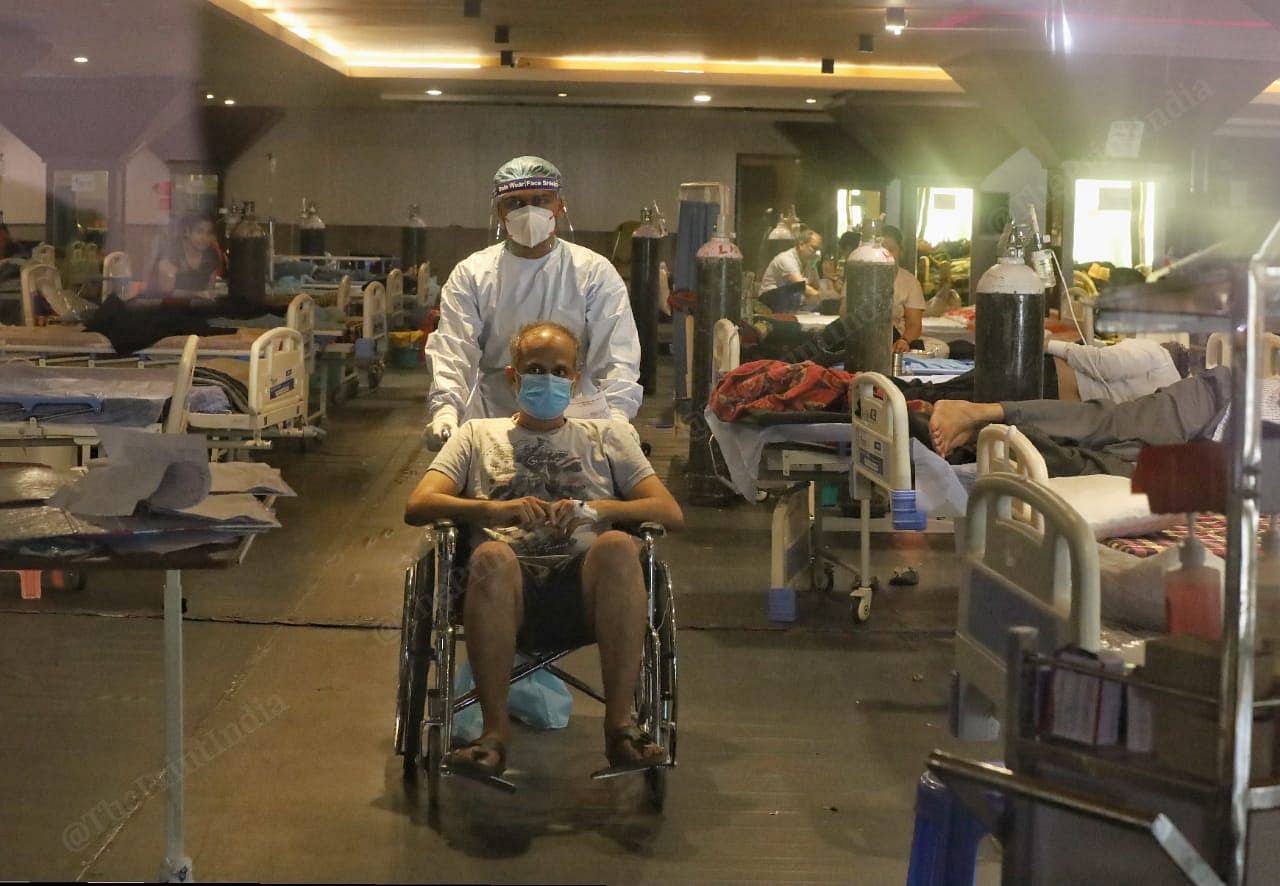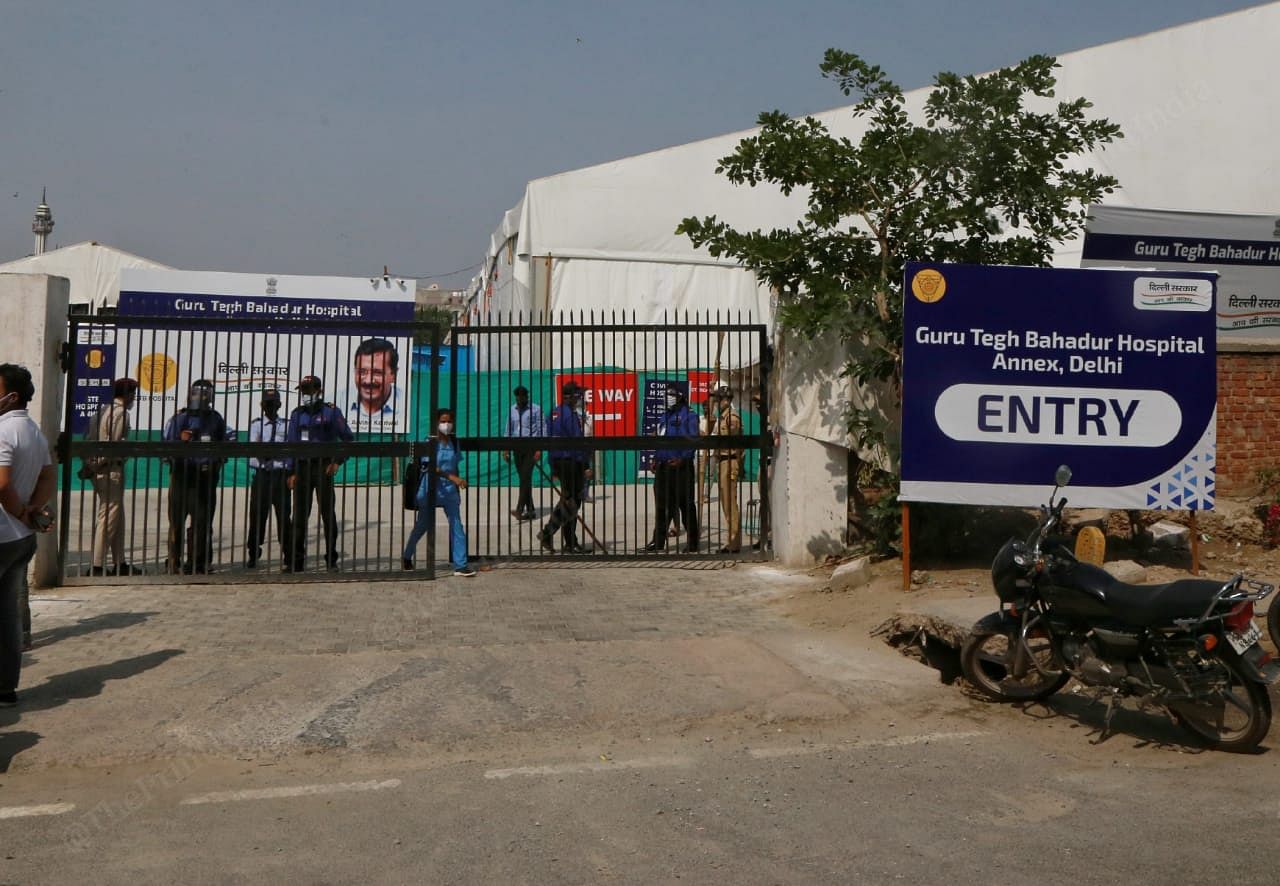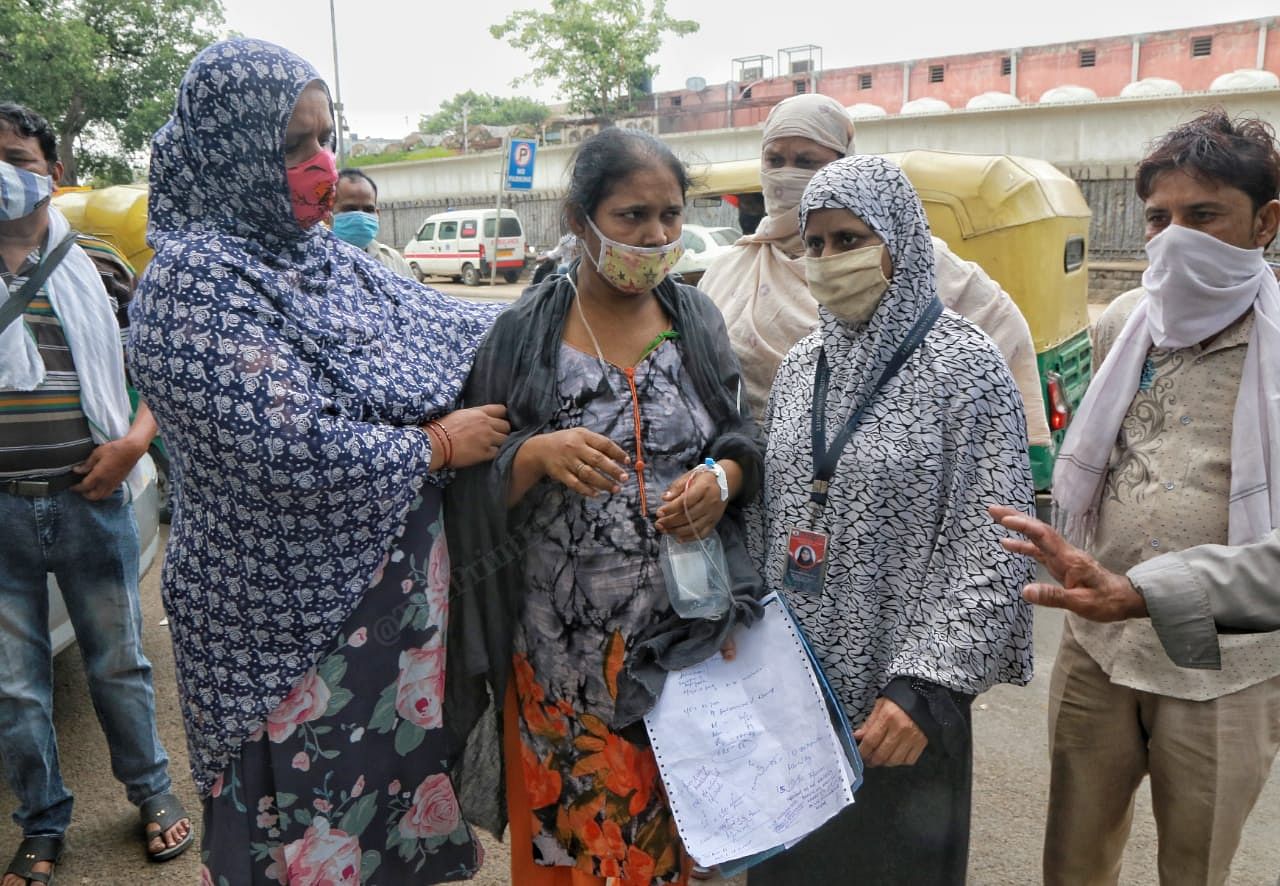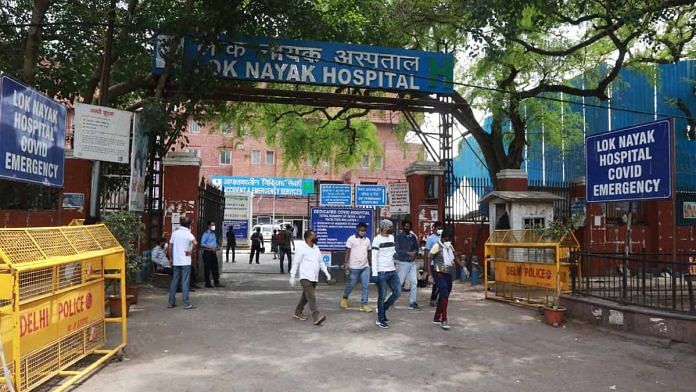New Delhi: The Lok Nayak Jai Prakash Narayan (LNJP) Hospital in Delhi resembled a ghost of its past self Thursday. Just three weeks back, the situation at the hospital was devastating as the city’s health infrastructure almost crumbled with the onslaught of the aggressive second wave of Covid-19.
Long queues of gasping patients, desperately waiting for beds and oxygen, when none were available, was a common scene outside most hospitals.
However, with the dip in daily cases in the national capital the crowds outside the hospitals have reduced now. Moreover, with the augmentation in resources, most patients have now been able to secure oxygen beds in these hospitals and Covid care centres without much delay.
The Covid data, released by the Delhi government, reveals that in the last three weeks, daily cases and positivity rate have dipped in the capital. On 20 April, the city saw 28,395 cases, the highest it has ever recorded, and the positivity rate (rate of positive cases to total tests) was 32.8 per cent.
However, daily cases dipped to 8,506 Thursday and the positivity rate also fell to 12.4 per cent. But this period also saw a decline in daily tests, which fell from 86,526 on 20 April to 68,575.
With the dip in cases, two of Delhi’s largest government hospitals — LNJP and Guru Tegh Bahadur (GTB) Hospital — have several oxygen beds vacant and patients said they did not have to wait for admission. But, they noted, that it is still extremely tough to find an ICU bed in the city.
According to doctors at Delhi’s government and private hospitals, the lockdown imposed on 19 April, coupled with a dip in cases and a simultaneous increase in oxygen beds led to fewer admissions in hospitals, which eventually reduced the long queues of patients.
This was also evident on the Delhi government’s website that shows real-time updates of vacant hospital beds and ventilators. As of Friday, a total of 13,118 hospital beds were available. In comparison, on 20 April, only 3,186 beds were available, the website showed.
But only 246 of the 13,118 beds available are ICU beds, indicating the persisting shortage of ventilator beds in the city, which several doctors also warned about.
ThePrint reached Dr Nutan Mundeja, Director General of Health Services in Delhi, via call for a comment but did not receive a response till the time of publishing this report.

Also read: Delhi will need more oxygen, AAP govt tells SC why requirement shot up 38% to 976 MT a day
No hiccups in finding oxygen beds
Outside LNJP Hospital, which is also Delhi’s largest Covid facility, 37-year-old Rajdeep Kaur said that her sister-in-law was admitted to the hospital almost immediately on arrival.
“The formalities took time, almost half an hour, but we didn’t have to wait for a bed to be allotted,” she said.
Similarly, at GTB Hospital, the few patients and ambulances that came to the hospital were allotted a bed as soon as possible.
“My mother’s oxygen levels dipped so the doctor said she needs to be hospitalised. I got her here and got a bed almost immediately,” 28-year-old Anshu told ThePrint.
Even the Covid care centre attached to these hospitals saw fewer admissions in the past few days. The LNJP Hospital has two care centres associated with it, in Shehnai Banquet Hall and Rakab Ganj gurdwara, and a third one is being set up in Ramlila Maidan.
At the centre in the Shehnai Banquet Hall, more than half the beds are vacant.
“We were running full capacity in the last week of April. But now numbers are under control and only 40 of our total 100 beds are occupied,” a doctor at the centre, who wished to remain unnamed, told ThePrint.
A similar scene was visible at the new Covid care centre attached to the GTB Hospital, at Northeast Delhi’s Ramlila Ground, where only 12 of the 100 operational beds were occupied by Thursday afternoon.
According to doctors, two key components have led to this dip in hospital admission — lockdown and more resources.
“Two factors are responsible for fewer admissions; one is the lockdown which has helped in breaking the chain of transmission and the second is the creation of Covid care facilities with oxygen support, which are attached to hospitals,” said Dr Suresh Kumar, medical director, LNJP Hospital.
Dr B.L. Sherwal, medical director at the Delhi government-run Rajiv Gandhi Hospital, also made a similar assessment.
“The lockdown was imposed at the right time, which is why we have seen the positivity rate coming down by more than half. If the lockdown wasn’t imposed then maybe the positivity rate would have touched 50 per cent and it would have been impossible to manage,” Dr Sherwal told ThePrint.
He added: “More beds are available now because cases have dipped and as a result the number of sick patients requiring admissions are less and that is why we are seeing fewer admissions.”

Also read: To avoid ‘Delhi-like’ crisis, Tamil Nadu’s ‘oxygen war room’ is working 24×7 to ensure supply
Shortage of ICU beds persists
While the burden on Delhi’s hospitals has eased with the dip in cases and more oxygen beds, there continues to be a significant shortage of ICU beds in the city.
At both LNJP and GTB hospital, there are no ICU beds vacant and several families can be found waiting for them outside the two hospitals.
“We have been to four hospitals since morning but there are no ventilator beds anywhere. Everywhere they are saying that there are oxygen beds but no ICU ventilator beds. Here also they are saying we will let you know but it has been over an hour and they haven’t found room yet,” said Monu Pal, who was waiting outside GTB Hospital.
Pinky, a resident of Ghaziabad, had rushed to several hospitals in Noida, Ghaziabad and Delhi to secure an ICU bed for her father to no avail, before coming to LNJP Hospital, where too no beds were available.
“I have just been going around all day looking for an ICU bed but there isn’t one anywhere. My last hope was LNJP and now even they have turned me away,” she told ThePrint.

The shortage of ICU beds, doctors in Delhi noted, was primarily due to the serious complications that Covid patients were developing during the recovery period.
“We are seeing patients on their 13th and 14th day coming in with post-Covid complications which require ventilator support. So while oxygen beds are even lying empty now, demand for ICU beds have shot up,” said Dr Dhiraj Malik, medical superintendent, Saroj Super Speciality Hospital. The private hospital has been converted into a dedicated Covid facility.
“It is easy to create oxygen beds, you put an oxygen cylinder and it can be done. But ICU beds need staff, gas pipelines, ventilators-all of which cannot be developed easily,” Dr Malik told ThePrint.
Also read: Cases rise but over 87% inmates in Delhi’s prisons can’t get Covid shot. Age is the culprit



